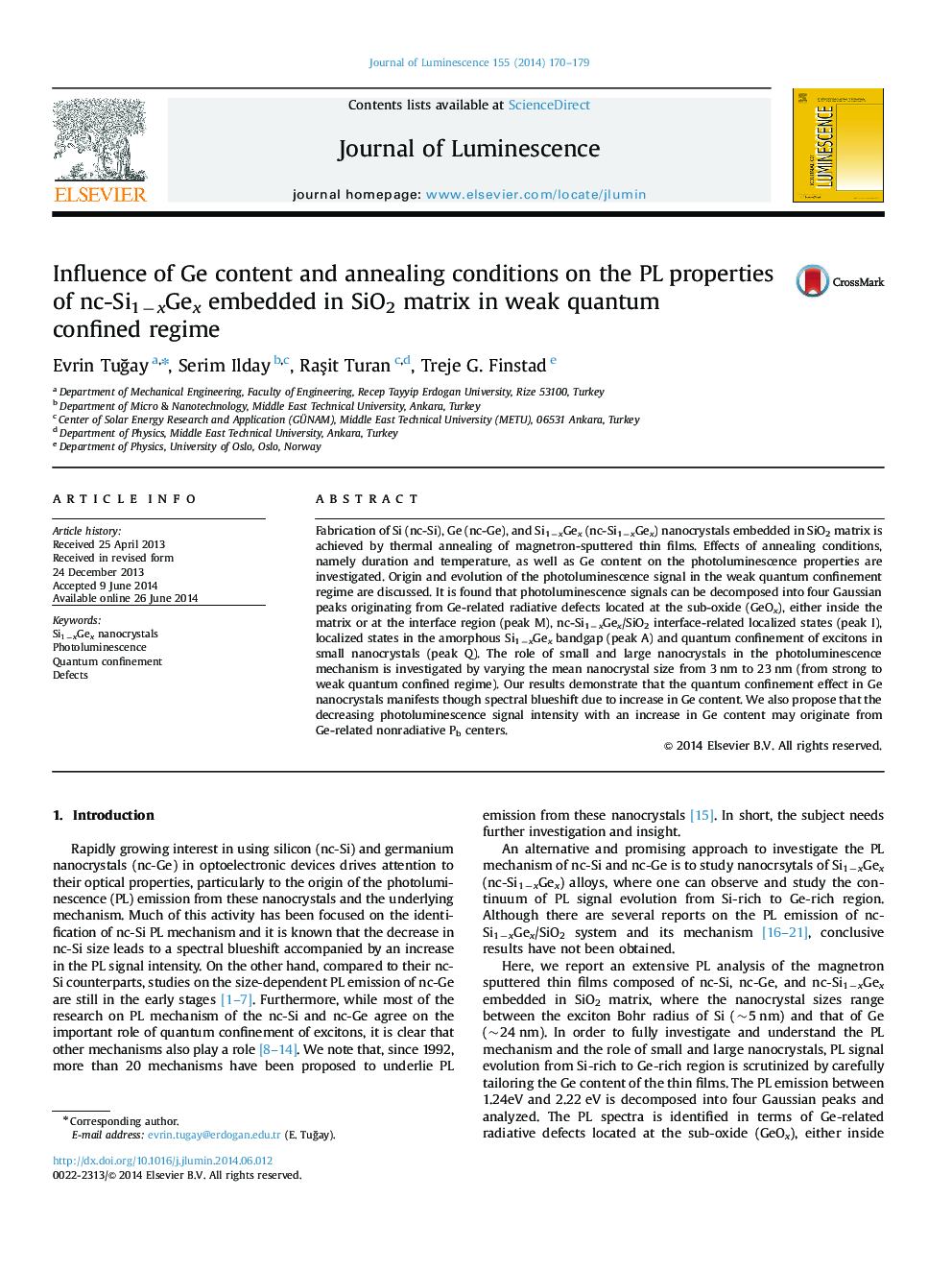| Article ID | Journal | Published Year | Pages | File Type |
|---|---|---|---|---|
| 5399427 | Journal of Luminescence | 2014 | 10 Pages |
Abstract
Fabrication of Si (nc-Si), Ge (nc-Ge), and Si1âxGex (nc-Si1âxGex) nanocrystals embedded in SiO2 matrix is achieved by thermal annealing of magnetron-sputtered thin films. Effects of annealing conditions, namely duration and temperature, as well as Ge content on the photoluminescence properties are investigated. Origin and evolution of the photoluminescence signal in the weak quantum confinement regime are discussed. It is found that photoluminescence signals can be decomposed into four Gaussian peaks originating from Ge-related radiative defects located at the sub-oxide (GeOx), either inside the matrix or at the interface region (peak M), nc-Si1âxGex/SiO2 interface-related localized states (peak I), localized states in the amorphous Si1âxGex bandgap (peak A) and quantum confinement of excitons in small nanocrystals (peak Q). The role of small and large nanocrystals in the photoluminescence mechanism is investigated by varying the mean nanocrystal size from 3Â nm to 23Â nm (from strong to weak quantum confined regime). Our results demonstrate that the quantum confinement effect in Ge nanocrystals manifests though spectral blueshift due to increase in Ge content. We also propose that the decreasing photoluminescence signal intensity with an increase in Ge content may originate from Ge-related nonradiative Pb centers.
Related Topics
Physical Sciences and Engineering
Chemistry
Physical and Theoretical Chemistry
Authors
Evrin TuÄay, Serim Ilday, RaÅit Turan, Treje G. Finstad,
